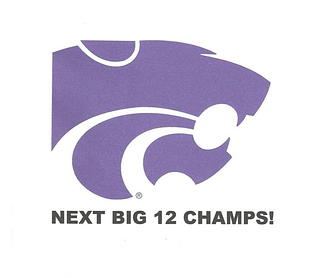Mountain West preview: What to know about WSU’s upcoming opponents
Jon Wilner Aug. 15, 2024 at 10:05 am
The Mountain West did not expand or contract its membership during the offseason. It did not change commissioners or how the championship game participants are determined. Sure, there are several new coaches, and rosters have undergone multiple makeovers. But despite adding more games with the Washington State Cougars and Oregon State Beavers, the underlying structure of Mountain West football is the same as last year.
And yet, this season will be unlike anything the conference has experienced. Ever.
For the first time, the Mountain West has a guaranteed path into the College Football Playoff. That doesn’t mean it will be represented in the expanded, 12-team event that begins in mid-December. But the new format carves out one berth for the highest-ranked champion from the Group of Five leagues.
The Mountain West winner will be matched against the top teams from the American, Conference USA, Mid-American and Sun Belt in a résumé showdown judged by the CFP selection committee.
“The piece that was most important to us was access,” Mountain West commissioner Gloria Nevarez told the Hotline earlier this year, after the CFP announced the format change.
The highest-ranked team from the Group of Five will join the winners of the ACC, Big Ten, Big 12 and SEC as the automatic qualifiers. The only difference: Whereas the Power Four winners receive opening-round byes, the Group of Five participant will play a road game, likely against the No. 5 seed.
But at least there’s a spot at the table.
“The five top conference champions are in the playoff,” Nevarez said. “That is something we are aiming for, that we work for, that we talk about and that we hope to position for.”
Boise State is the conference’s best hope to claim the Group of Five berth. But if the Broncos stumble, a handful of contenders lurk.
Our projections for the Mountain West race:
1. Boise State: An easy call thanks to the best offensive line in the conference, a veteran defense, plenty of playmakers and a favorable schedule — the Broncos don’t play Air Force, Fresno State or Colorado State. Yes, they have a quarterback competition between returnee Maddux Madsen and USC transfer Malachi Nelson, a former five-star prospect. We view Nelson as the front-runner, but does it matter? Compared with the rest of the conference, Boise State’s depth chart is loaded.
2. Fresno State: The Bulldogs lost head coach Jeff Tedford, who stepped down in July due to health concerns. The transition to interim coach Tim Skipper should be smooth given the winning culture and long list of returnees — a list that starts with quarterback Mikey Keene. Fresno State doesn’t play Boise State, but road games at UNLV and Air Force will be daunting.
3. Colorado State: The Rams rate higher on the Hotline than they did in the MW preseason poll (fifth), with our relatively optimistic outlook rooted in returning quarterback Brayden Fowler-Nicolosi, a veteran secondary and a handful of narrow losses in 2023. Had a few bounces gone differently, the Rams would have won eight games and entered this fall as a top-tier contender.
4. UNLV: The Rebels were one of the top turnaround stories of the 2023 season — they won nine games under first-year coach Barry Odom — but won’t have the element of surprise this fall. Instead, UNLV will assume the role of favorite more often than not. Odom needs a quarterback to replace Jayden Maiava, who skipped town to USC, but should have enough talent elsewhere to maintain the momentum.
5. Air Force: Troy Calhoun and his triple-option attack are back, but most everything else on offense is new for the Falcons, who return just two starters on that side of the ball. (The situation on defense is similar, with only four returning starters.) Air Force doesn’t play Boise State or UNLV, which helps. But we can’t forget the collapse from last November and wonder if the bad vibes will carry over.
6. San Diego State: The lost season is a distant memory for the Aztecs, who replaced Brady Hoke with Sean Lewis in one of the shrewdest coaching moves in the country. Before his ill-fated stint as Colorado’s offensive coordinator last fall — a hopeless situation given the personnel in Boulder — Lewis guided Kent State to multiple seven-win seasons and typically maxed out his personnel. If not for a challenging road schedule, the Aztecs would be slotted even higher.
7. Utah State: Perhaps the most difficult team in the conference to project. The Aggies’ roster is plenty capable of contending for a top-half finish, but the coaching situation — Blake Anderson was fired in July, with defensive coordinator Nate Dreiling named interim head coach — adds a megadose of uncertainty in Logan. Don’t be surprised if Utah State finishes third … or 10th.
8. Hawaii: It’s tempting (extremely tempting) to project a rosier position than eighth for the Rainbow Warriors, who return 15 starters, including quarterback Brayden Schager, and have stability within their coaching staff. But a hint of skepticism remains nonetheless: Is third-year coach Tommy Chang capable of lifting the program to its first winning season of the decade?
9. Wyoming: Admittedly, the Hotline could look foolish with this projection. The Cowboys are well-stocked where it matters most, on the lines of scrimmage. But so much of their success in the past decade was rooted in the brilliance of coach Craig Bohl, who retired last winter. His replacement, Jay Sawvel, served as Wyoming’s defensive coordinator under Bohl but has never been a head coach.
10. San Jose State: Yet another team with a new head coach as the Spartans lost Brent Brennan to Arizona and hired Ken Niumatalolo, the former Navy boss with a triple-option background. SJSU is committed to a modern passing game under playcaller Craig Stutzmann, a practitioner of the run-and-shoot. But there are myriad holes on the depth chart (hello, offensive line), and the schedule is among the most difficult in the conference.
11. Nevada: We debated whether to peg the Wolf Pack for last place — the race to the bottom could be highly competitive — but have a generally favorable view of new coach Jeff Choate and his dual-threat quarterback, Brendon Lewis, a second-year starter who transferred from Colorado. There are returning starters on both lines of scrimmage, but we aren’t convinced that’s a positive given the performance up front last season.
12. New Mexico: Bronco Mendenhall, who led Brigham Young for a decade (before jumping to Virginia), takes over the foundering program in Albuquerque. The Lobos haven’t been bowling since the Obama administration and face a long, steep climb back to the postseason. (They have three conference wins in the past three years.) Does Mendenhall have the energy required for the multiyear reclamation project?
Jon Wilner:
jwilner@bayareanewsgroup.com
 www.in2013dollars.com
www.in2013dollars.com








